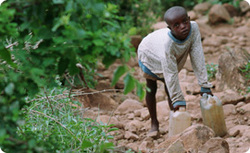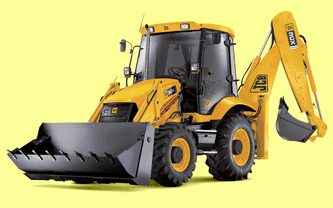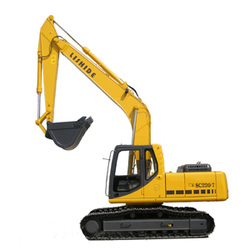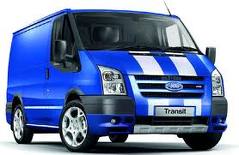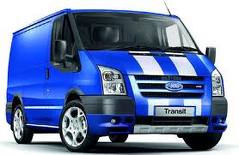Water crisis
Water crisis is a term used to refer to the world’s water resources relative to human demand. The term has been applied to the worldwide water situation by the United Nations and other world organizations Others, for example the Food and Agriculture Organization, said in 2003 that there is no water crisis but steps must be taken to avoid one in the future. The major aspects of the water crisis are allegedly overall scarcity of usable water and water pollution.
Lawrence Smith, the president of the population institute, asserts that although an overwhelming majority of the planet is composed of water, 97% of this water is constituted of saltwater; the freshwater used to sustain humans is only 3% of the total amount of water on Earth (Hoevel). Therefore, Smith believes that the competition for water in an overpopulated world would pose a major threat to human stability (Hoevel); indeed, world wars may be fought over the control of thinning ice sheets and nearly desiccated reservoirs. 2 billion people have gained access to a safe water source since 1990 The proportion of people in developing countries with access to safe water is calculated to have improved from 30 percent in 1970 to 71 percent in 1990, 79 percent in 2000 and 84 percent in 2004, parallel with rising population. This trend is projected to continue.The Earth has a finite supply of fresh water, stored in aquifers, surface waters and the atmosphere. Sometimes oceans are mistaken for available water, but the amount of energy needed to convert saline water to potable water is prohibitive today, explaining why only a very small fraction of the world's water supply derives from desalination.There are several principal manifestations of the water crisis.Inadequate access to safe drinking water for about 884 million people.Inadequate access to water for sanitation and waste disposal for 2.5 billion people.Groundwater overdrafting (excessive use) leading to diminished agricultural yieldsOveruse and pollution of water resources harming biodiversity Regional conflicts over scarce water resources sometimes resulting in warfare Waterborne diseases and the absence of sanitary domestic water are one of the leading causes of death worldwide. For children under age five, waterborne diseases are the leading cause of death. At any given time, half of the world's hospital beds are occupied by patients suffering from waterborne diseases. According to the World Bank, 88 percent of all waterborne diseases are caused by unsafe drinking water, inadequate sanitation and poor hygiene. Drought dramatizes the underlying tenuous balance of safe water supply, but it is the imprudent actions of humans that have rendered the human population vulnerable to the devastation of major droughts. A 2006 United Nations report focuses on issues of governance as the core of the water crisis, saying "There is enough water for everyone" and "Water insufficiency is often due to mismanagement, corruption, lack of appropriate institutions, bureaucratic inertia and a shortage of investment in both human capacity and physical infrastructure".Official data also shows a clear correlation between access to safe water and GDP per capita. It has also been claimed, primarily by economists, that the water situation has occurred because of a lack of property rights, government regulations and subsidies in the water sector, causing prices to be too low and consumption too high. Vegetation and wildlife are fundamentally dependent upon adequate freshwater resources. Marshes, bogs and riparian zones are more obviously dependent upon sustainable water supply, but forests and other upland ecosystems are equally at risk of significant productivity changes as water availability is diminished. In the case of wetlands, considerable area has been simply taken from wildlife use to feed and house the expanding human population. But other areas have suffered reduced productivity from gradual diminishing of freshwater inflow, as upstream sources are diverted for human use. In seven states of the U.S. over 80 percent of all historic wetlands were filled by the 1980s, when Congress acted to create a “no net loss” of wetlands. In Europe extensive loss of wetlands has also occurred with resulting loss of biodiversity or not. For example many bogs in Scotland have been developed or diminished through human population expansion. One example is the Portlethen Moss in Aberdeenshire. On Madagascar’s highland plateau, a massive transformation occurred that eliminated virtually all the heavily forested vegetation in the period 1970 to 2000. The slash and burn agriculture eliminated about ten percent of the total country’s native biomass and converted it to a barren wasteland. These effects were from overpopulation and the necessity to feed poor indigenous peoples, but the adverse effects included widespread gully erosion that in turn produced heavily silted rivers that “run red” decades after the deforestation. This eliminated a large amount of usable fresh water and also destroyed much of the riverine ecosystems of several large west-flowing rivers. Several fish species have been driven to the edge of extinction and some, such as, the disturbed Tokios, coral reef formations in the Indian Ocean are effectively lost. In October 2008, Peter Brabeck-Letmathe, chairman and former chief executive of Nestlé, warned that the production of biofuels will further deplete the world's water supply.
Water crisis is a term used to refer to the world’s water resources relative to human demand. The term has been applied to the worldwide water situation by the United Nations and other world organizations Others, for example the Food and Agriculture Organization, said in 2003 that there is no water crisis but steps must be taken to avoid one in the future. The major aspects of the water crisis are allegedly overall scarcity of usable water and water pollution.
Lawrence Smith, the president of the population institute, asserts that although an overwhelming majority of the planet is composed of water, 97% of this water is constituted of saltwater; the freshwater used to sustain humans is only 3% of the total amount of water on Earth (Hoevel). Therefore, Smith believes that the competition for water in an overpopulated world would pose a major threat to human stability (Hoevel); indeed, world wars may be fought over the control of thinning ice sheets and nearly desiccated reservoirs. 2 billion people have gained access to a safe water source since 1990 The proportion of people in developing countries with access to safe water is calculated to have improved from 30 percent in 1970 to 71 percent in 1990, 79 percent in 2000 and 84 percent in 2004, parallel with rising population. This trend is projected to continue.The Earth has a finite supply of fresh water, stored in aquifers, surface waters and the atmosphere. Sometimes oceans are mistaken for available water, but the amount of energy needed to convert saline water to potable water is prohibitive today, explaining why only a very small fraction of the world's water supply derives from desalination.There are several principal manifestations of the water crisis.Inadequate access to safe drinking water for about 884 million people.Inadequate access to water for sanitation and waste disposal for 2.5 billion people.Groundwater overdrafting (excessive use) leading to diminished agricultural yieldsOveruse and pollution of water resources harming biodiversity Regional conflicts over scarce water resources sometimes resulting in warfare Waterborne diseases and the absence of sanitary domestic water are one of the leading causes of death worldwide. For children under age five, waterborne diseases are the leading cause of death. At any given time, half of the world's hospital beds are occupied by patients suffering from waterborne diseases. According to the World Bank, 88 percent of all waterborne diseases are caused by unsafe drinking water, inadequate sanitation and poor hygiene. Drought dramatizes the underlying tenuous balance of safe water supply, but it is the imprudent actions of humans that have rendered the human population vulnerable to the devastation of major droughts. A 2006 United Nations report focuses on issues of governance as the core of the water crisis, saying "There is enough water for everyone" and "Water insufficiency is often due to mismanagement, corruption, lack of appropriate institutions, bureaucratic inertia and a shortage of investment in both human capacity and physical infrastructure".Official data also shows a clear correlation between access to safe water and GDP per capita. It has also been claimed, primarily by economists, that the water situation has occurred because of a lack of property rights, government regulations and subsidies in the water sector, causing prices to be too low and consumption too high. Vegetation and wildlife are fundamentally dependent upon adequate freshwater resources. Marshes, bogs and riparian zones are more obviously dependent upon sustainable water supply, but forests and other upland ecosystems are equally at risk of significant productivity changes as water availability is diminished. In the case of wetlands, considerable area has been simply taken from wildlife use to feed and house the expanding human population. But other areas have suffered reduced productivity from gradual diminishing of freshwater inflow, as upstream sources are diverted for human use. In seven states of the U.S. over 80 percent of all historic wetlands were filled by the 1980s, when Congress acted to create a “no net loss” of wetlands. In Europe extensive loss of wetlands has also occurred with resulting loss of biodiversity or not. For example many bogs in Scotland have been developed or diminished through human population expansion. One example is the Portlethen Moss in Aberdeenshire. On Madagascar’s highland plateau, a massive transformation occurred that eliminated virtually all the heavily forested vegetation in the period 1970 to 2000. The slash and burn agriculture eliminated about ten percent of the total country’s native biomass and converted it to a barren wasteland. These effects were from overpopulation and the necessity to feed poor indigenous peoples, but the adverse effects included widespread gully erosion that in turn produced heavily silted rivers that “run red” decades after the deforestation. This eliminated a large amount of usable fresh water and also destroyed much of the riverine ecosystems of several large west-flowing rivers. Several fish species have been driven to the edge of extinction and some, such as, the disturbed Tokios, coral reef formations in the Indian Ocean are effectively lost. In October 2008, Peter Brabeck-Letmathe, chairman and former chief executive of Nestlé, warned that the production of biofuels will further deplete the world's water supply.
Excavators
Excavators are heavy construction equipment consisting of a boom, bucket and cab on a rotating platform. The house sits atop an undercarriage with tracks or wheels. All movement and functions of the excavator are accomplished through the use of hydraulic fluid be it with rams or motors. Their design is a natural progression from the steam shovel.
JCB
JCB is a global construction, demolition and agricultural equipment company headquartered in Rocester, United Kingdom. It is the world's third-largest construction equipment manufacturer.It produces over 300 types of machines, including diggers , excavators, tractors and diesel engines. It has 18 factories across Asia, Europe, North America and South America and its products are sold in over 150 countries. It is a family-owned company and is named after its founder J. C. Bamford. In the UK "JCB" is often used colloquially as a generic description for mechanical diggers and excavators and now appears in the Oxford English Dictionary, although it is still held as a trademark.
Van
A van is a kind of vehicle used for transporting goods or groups of people. It is usually a box-shaped vehicle on four wheels, about the same width and length as a large automobile, but taller and usually higher off the ground, also referred to as a light commercial vehicle or LCV. However, in North America, the term may be used to refer to any truck with a rigid cargo body fixed to the cab, even up to large sizes.In the UK usage, it can be either specially designed or based on a saloon/sedan car, the latter type often including derivatives with open backs (such as pick-up trucks). There are vans in all shapes and sizes, ranging from the classic van version of the tiny Mini to the five metre long (LWB) variants of the Mercedes Sprinter van. Vehicles larger than this are classified as lorries.
Motorcycle
A motorcycle (also called a motorbike, bike, or cycle) is a single-track, engine-powered, two-wheeled motor vehicle. Motorcycles vary considerably depending on the task for which they are designed, such as long distance travel, navigating congested urban traffic, cruising, sport and racing or off-road conditions.Motorcycles are one of the most affordable forms of motorised transport in many parts of the world and, for most of the world's population, they are also the most common type of motor vehicle. There are around 200 million motorcycles (including mopeds, motor scooters and other powered two and three-wheelers) in use worldwide, or about 33 motorcycles per 1000 people. This compares to around 590 million cars, or about 91 per 1000 people. Most of the motorcycles, 58%, are in the developing countries of Asia—Southern and Eastern Asia, and the Asia Pacific countries, excluding Japan—while 33% of the cars (195 million) are concentrated in the United States and Japan. As of 2002, India with an estimated 37 million motorcycles/mopeds was home to the largest number of motorised two wheelers in the world. China came a close second with 34 million motorcycles/mopeds.
Excavators are heavy construction equipment consisting of a boom, bucket and cab on a rotating platform. The house sits atop an undercarriage with tracks or wheels. All movement and functions of the excavator are accomplished through the use of hydraulic fluid be it with rams or motors. Their design is a natural progression from the steam shovel.
JCB
JCB is a global construction, demolition and agricultural equipment company headquartered in Rocester, United Kingdom. It is the world's third-largest construction equipment manufacturer.It produces over 300 types of machines, including diggers , excavators, tractors and diesel engines. It has 18 factories across Asia, Europe, North America and South America and its products are sold in over 150 countries. It is a family-owned company and is named after its founder J. C. Bamford. In the UK "JCB" is often used colloquially as a generic description for mechanical diggers and excavators and now appears in the Oxford English Dictionary, although it is still held as a trademark.
Van
A van is a kind of vehicle used for transporting goods or groups of people. It is usually a box-shaped vehicle on four wheels, about the same width and length as a large automobile, but taller and usually higher off the ground, also referred to as a light commercial vehicle or LCV. However, in North America, the term may be used to refer to any truck with a rigid cargo body fixed to the cab, even up to large sizes.In the UK usage, it can be either specially designed or based on a saloon/sedan car, the latter type often including derivatives with open backs (such as pick-up trucks). There are vans in all shapes and sizes, ranging from the classic van version of the tiny Mini to the five metre long (LWB) variants of the Mercedes Sprinter van. Vehicles larger than this are classified as lorries.
Motorcycle
A motorcycle (also called a motorbike, bike, or cycle) is a single-track, engine-powered, two-wheeled motor vehicle. Motorcycles vary considerably depending on the task for which they are designed, such as long distance travel, navigating congested urban traffic, cruising, sport and racing or off-road conditions.Motorcycles are one of the most affordable forms of motorised transport in many parts of the world and, for most of the world's population, they are also the most common type of motor vehicle. There are around 200 million motorcycles (including mopeds, motor scooters and other powered two and three-wheelers) in use worldwide, or about 33 motorcycles per 1000 people. This compares to around 590 million cars, or about 91 per 1000 people. Most of the motorcycles, 58%, are in the developing countries of Asia—Southern and Eastern Asia, and the Asia Pacific countries, excluding Japan—while 33% of the cars (195 million) are concentrated in the United States and Japan. As of 2002, India with an estimated 37 million motorcycles/mopeds was home to the largest number of motorised two wheelers in the world. China came a close second with 34 million motorcycles/mopeds.
Motorcycle
A motorcycle (or motorbike) is a form of transport to move people from one place to another. It does not have 4 wheels like a car. It has 2 wheels like a bicycle. But it has a motor like a car. A motorcycle is normally driven by one person. One may also take another person with him, on the back of the motorcycle. There are also motorcycles with a sidecar, then 3 people can be transported.
Motorcycles are used both for transportation and extreme sports. Since motorcycles can be lighter than cars, they can accelerate more quickly. But it also makes them not as safe as cars, because they do not have a protecting chassis around them like cars. Very often motorcycle-riders are injured heavily in accidents. A motorcycle rider can wear a helmet and clothing that has armor. This special clothing may reduce the rider's injuries in an accident.In the middle of the last century, motorcycles were used by many as a cheap method of transportation. Many people who did not have the money to buy a car, could afford a small motorcycle. Back then motorcycles were also much slower and with less motor-power. Today, motorcycles are used more as a hobby. Unlike cars, motorcycles do not have a protection against wind and rain. That makes it difficult to drive in winter or at bad weather.
On-road bikes (ones that are allowed on public roads) must have a special type of driver's license to be ridden legally. Off-road bikes are not allowed to be driven on public roads.
Speed and stunts are the main goals for off-road bike sports. Many on-road bikes are much faster than off-road bikes and can be used in sports such as motorbike racing.
There are different manufacturers of motorcycle, like Honda, Suzuki, Yamaha. A well known American manufacturer of motorcycles is Harley-Davidson.
A motorcycle (or motorbike) is a form of transport to move people from one place to another. It does not have 4 wheels like a car. It has 2 wheels like a bicycle. But it has a motor like a car. A motorcycle is normally driven by one person. One may also take another person with him, on the back of the motorcycle. There are also motorcycles with a sidecar, then 3 people can be transported.
Motorcycles are used both for transportation and extreme sports. Since motorcycles can be lighter than cars, they can accelerate more quickly. But it also makes them not as safe as cars, because they do not have a protecting chassis around them like cars. Very often motorcycle-riders are injured heavily in accidents. A motorcycle rider can wear a helmet and clothing that has armor. This special clothing may reduce the rider's injuries in an accident.In the middle of the last century, motorcycles were used by many as a cheap method of transportation. Many people who did not have the money to buy a car, could afford a small motorcycle. Back then motorcycles were also much slower and with less motor-power. Today, motorcycles are used more as a hobby. Unlike cars, motorcycles do not have a protection against wind and rain. That makes it difficult to drive in winter or at bad weather.
On-road bikes (ones that are allowed on public roads) must have a special type of driver's license to be ridden legally. Off-road bikes are not allowed to be driven on public roads.
Speed and stunts are the main goals for off-road bike sports. Many on-road bikes are much faster than off-road bikes and can be used in sports such as motorbike racing.
There are different manufacturers of motorcycle, like Honda, Suzuki, Yamaha. A well known American manufacturer of motorcycles is Harley-Davidson.
